Picture yourself sitting in a cozy speakeasy, a glass of smooth, amber whiskey in your hand. Have you ever wondered why each sip delivers a unique and complex flavor? It all boils down to the type of barrel used for aging the whiskey. From the mighty oak to the charred American oak, each barrel imparts its own distinct characteristics onto the spirit, elevating your drinking experience to new heights. In this article, we will explore the fascinating world of whiskey barrels and uncover the secrets behind their influence on the flavor profile of your favorite golden nectar. So, grab a glass, sit back, and let's journey through the intoxicating realms of whiskey and barrels. Cheers!
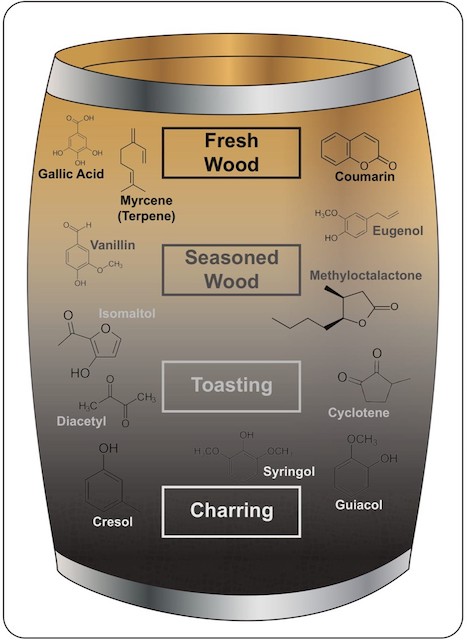
Introduction
When it comes to the art of whiskey making, there are many factors that contribute to the final flavor profile of the spirit. Perhaps one of the most crucial elements in this process is the choice of barrel used for aging the whiskey. The type of barrel has a significant influence on the flavor, as well as the overall character and quality of the whiskey. In this comprehensive article, we will explore the history and importance of barrels in whiskey making, the various types of barrels used, their flavor profile influence, the maturation process, secondary influences on flavor, experimental barrel aging techniques, regional characteristics, and the craft behind sourcing and cooperage. So sit back, pour yourself a glass of your favorite whiskey, and let's dive in!
The Importance of Barrels in Whiskey Making
A Brief History of Whiskey Aging
Whiskey aging dates back centuries and has played a crucial role in crafting the smooth and complex flavors we associate with this beloved spirit. Historically, whiskey was stored and transported in wooden barrels due to their durability and convenience. Over time, it was discovered that aging whiskey in barrels not only preserved the spirit but also imparted unique flavors and complexities. This led to the development of the aging process as we know it today, with barrels becoming an integral part of whiskey production.
Role of Barrels in Whiskey Aging
Barrels are more than just storage vessels for whiskey; they actively contribute to the aging process by interacting with the spirit. The porous nature of wood allows for the whiskey to breathe, enabling the gradual integration of flavors from the barrel. Additionally, the charred interior of the barrel acts as a filter, removing impurities and mellowing the whiskey. This delicate dance between the whiskey and the barrel is what gives whiskey its distinct character and complexity.
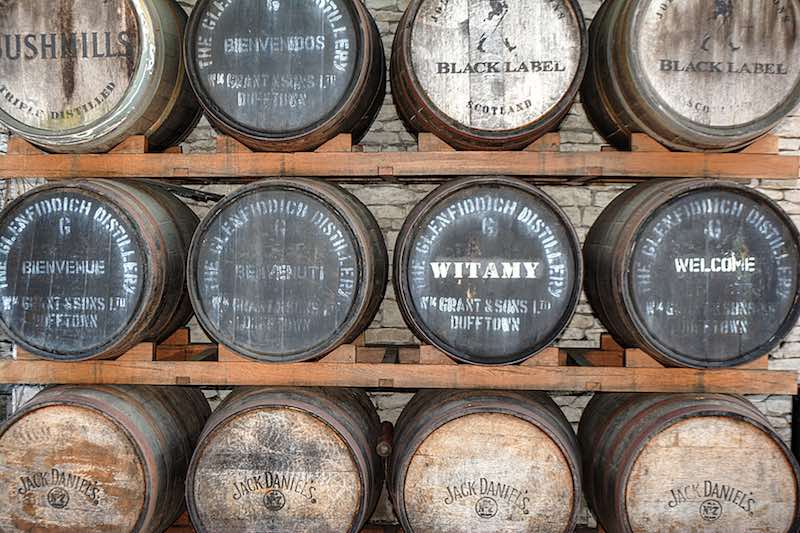
Types of Barrels Used in Whiskey Aging
Traditional Oak Barrels
Traditional oak barrels, also known as standard barrels, are the most widely used and recognized barrels in the whiskey industry. They are typically made from white oak, which is known for its desirable wood properties, such as tight grain and chemical composition. These barrels provide a balanced flavor profile and allow for the gradual development of the whiskey's characteristics, making them a popular choice among distilleries worldwide.
American Oak Barrels
American oak barrels, often referred to as ex-bourbon barrels, are a staple in the whiskey-making process, particularly in the production of bourbon. These barrels are typically made from white oak and have previously held bourbon for a minimum of two years. The aging process imparts vanilla, caramel, and coconut notes to the whiskey, giving it a smooth and sweet character. American oak barrels are also known for their ability to mellow the spirit, resulting in a well-rounded and approachable flavor profile.
European Oak Barrels
European oak barrels, commonly referred to as ex-sherry or ex-port barrels, bring a unique and distinct flavor profile to the whiskey. Made primarily from oak varieties such as Spanish or French oak, these barrels have previously held fortified wines like sherry or port. The whiskey aged in European oak barrels develops rich flavors of dried fruits, chocolate, and spices, with a pronounced tannic structure. These barrels are highly sought after for their ability to add complexity and depth to the spirit.
Sherry Casks
Sherry casks, as the name suggests, are barrels that have exclusively held sherry. These casks are often made from European oak and are highly valued for their ability to impart nutty, fruity, and spicy characteristics to the whiskey. The sherry-soaked wood infuses the spirit with complex flavors like raisins, almonds, and cinnamon, creating a luxurious and well-rounded experience for the palate. Sherry casks are particularly popular in the production of Scotch whisky, where they contribute to the iconic flavors associated with the spirit.
Bourbon Barrels
Bourbon barrels are synonymous with American whiskey production, as federal law dictates that bourbon must be aged in new charred oak barrels. These barrels are typically made from American white oak and impart distinct flavors of caramel, vanilla, and oak spice to the whiskey. The charring process caramelizes the wood sugars, adding depth and complexity to the spirit. Bourbon barrels contribute to the rich and robust flavor profile that has made bourbon a beloved spirit worldwide.
Wine Barrels
Wine barrels, often sourced from wineries, add an intriguing twist to the traditional whiskey aging process. These barrels, previously used for aging wines such as red or white varietals, bring unique fruit and wine notes to the whiskey. The interaction between the residual wine and the whiskey results in flavors that can range from fruity and floral to earthy and herbaceous. Whiskey aged in wine barrels offers a creative and innovative approach to flavor development, opening up a world of possibilities for distillers and enthusiasts alike.
Flavor Profile Influence
Oak Influence on Whiskey Flavor
The type of oak used in a whiskey barrel has a significant impact on the flavor profile of the spirit. Oak itself contributes flavors such as vanilla, caramel, and spice, which are commonly associated with whiskey. The composition of the wood, including the presence of lignins and tannins, influences the development and extraction of these flavors during the aging process. Different types of oak, such as American and European oak, have distinct chemical compositions, resulting in variations in flavor profiles.
Toasted and Charred Barrels: Adding Complexity
To enhance the flavor profile of whiskey, barrels are often toasted or charred on the inside. Toasting involves applying heat to the wood, which caramelizes the sugars and imparts a range of flavors, including nutty, toasty, and biscuit-like notes. Charring, on the other hand, takes toasting a step further by exposing the wood to an open flame, creating a charred layer. This charring process introduces additional flavors like smoke, charcoal, and spice. The level of toasting or charring can be customized by distillers to achieve specific flavor profiles, allowing for a greater level of control and creativity in the whiskey-making process.
Nutty and Spicy Notes from Sherry Casks
Sherry casks, known for their flavors of dried fruits, nuts, and spices, play a crucial role in shaping the flavor profile of whiskey. The residual sherry left within the barrel interacts with the whiskey, infusing it with layers of complexity. The nutty notes, such as almonds or walnuts, lend richness and depth to the spirit, while the spices, like cinnamon and cloves, add warmth and complexity. These flavorful characteristics bring a unique dimension to whiskey and are highly sought after by enthusiasts looking for a distinctive tasting experience.
Sweetness from Bourbon Barrels
Bourbon barrels, with their inherent sweetness and caramelized flavors, contribute significantly to the flavor profile of whiskey. The new charred oak used in bourbon production imparts flavors like caramel, vanilla, and oak spice to the spirit. These elements combine to create a rich and sweet palate, making bourbon a popular choice among whiskey enthusiasts. The natural sweetness of the bourbon barrel adds depth and complexity to the whiskey, balancing out the other flavor components and creating a harmonious tasting experience.
Fruit and Wine Notes from Wine Barrels
Whiskey aged in wine barrels offers a unique flavor profile characterized by the presence of fruit and wine notes. The residual wine left in the barrel interacts with the whiskey, resulting in flavors that can range from fruity and floral to earthy and herbaceous. Red wine barrels may introduce flavors like berries, plums, or chocolate, while white wine barrels may contribute citrus, floral, or tropical fruit notes. This infusion of wine characteristics adds complexity and a touch of elegance to the whiskey, creating a truly remarkable drinking experience.
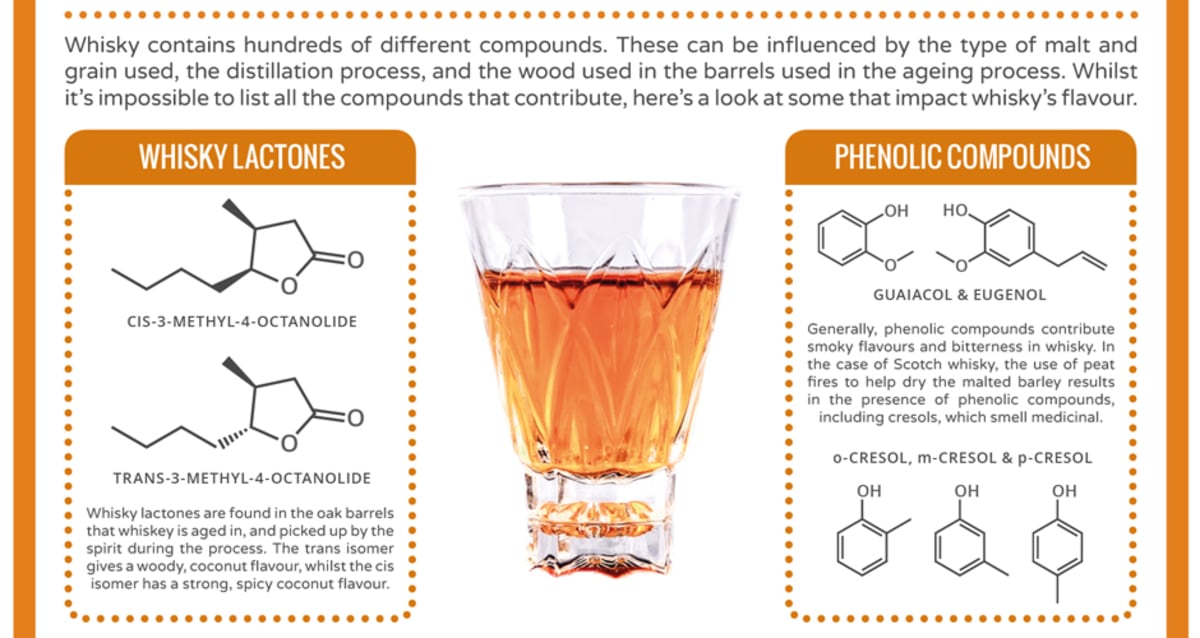
Maturation Process: Time and Influence
Aging Timeline
The duration of the aging process significantly impacts the flavor development of whiskey. During the maturation process, whiskey undergoes a series of chemical reactions that transform its flavor profile. The interaction between the whiskey and the barrel occurs gradually over time, with the wood imparting flavors and nuances to the spirit. The aging timeline can vary widely, with some whiskies maturing for a minimum of three years, while others may age for decades. Each passing year brings about subtle changes in the whiskey's flavor, resulting in a more refined and complex spirit.
Barrel Fill Level
The fill level of the barrel also plays a role in the maturation process and flavor profile of the whiskey. When filled to the maximum capacity, the whiskey has greater contact with the wood, allowing for increased flavor extraction. However, as the level of whiskey in the barrel decreases due to evaporation (known as the "angel's share"), oxygen becomes a factor. The oxygen exposure can influence the whiskey by introducing oxidative reactions, which may result in changes to the flavor profile. Distilleries carefully monitor the fill level to ensure a balance between flavor extraction and oxidation, ultimately shaping the final character of the whiskey.
Climate and Warehouse Location
The climate and warehouse location where whiskey barrels are stored also contribute to the maturation process and flavor development. The temperature and humidity fluctuations in the aging environment influence the interaction between the whiskey and the barrel. In warmer climates, such as Kentucky's bourbon country, increased heat accelerates the aging process, resulting in more rapid flavor extraction and maturation. Conversely, in cooler climates, aging is slower, allowing the whiskey to develop more slowly and subtly. Distilleries strategically select warehouse locations to take advantage of specific climate conditions, enhancing the desired flavor characteristics of their whiskey.
Secondary Influence on Flavor
Barrel Treatment and Charring Level
Aside from the type of wood and char level, other barrel treatments and charring levels can affect the flavor of whiskey. Distilleries may experiment with different levels of toasting or charring on the inside of the barrel to achieve specific flavor profiles. The duration of toasting or charring, as well as the intensity of the heat applied, can be adjusted to create desired flavor characteristics. These additional techniques are a testament to the artistry and creativity of whiskey making, allowing distilleries to push the boundaries and create unique expressions.
Previous Contents of the Barrel
The previous contents of the barrel, also known as the barrel's "history," can leave a lasting impression on the flavor of whiskey. For example, a barrel that previously held bourbon would impart residual bourbon flavors, contributing to the whiskey's sweetness and oak spice notes. Similarly, a sherry cask would bring the distinct flavors of sherry to the whiskey. The residual flavors from the barrel's history interact with the whiskey, adding layers of complexity and nuance. Distilleries carefully consider the previous contents of the barrel to select the best-suited barrels for their desired flavor profiles.
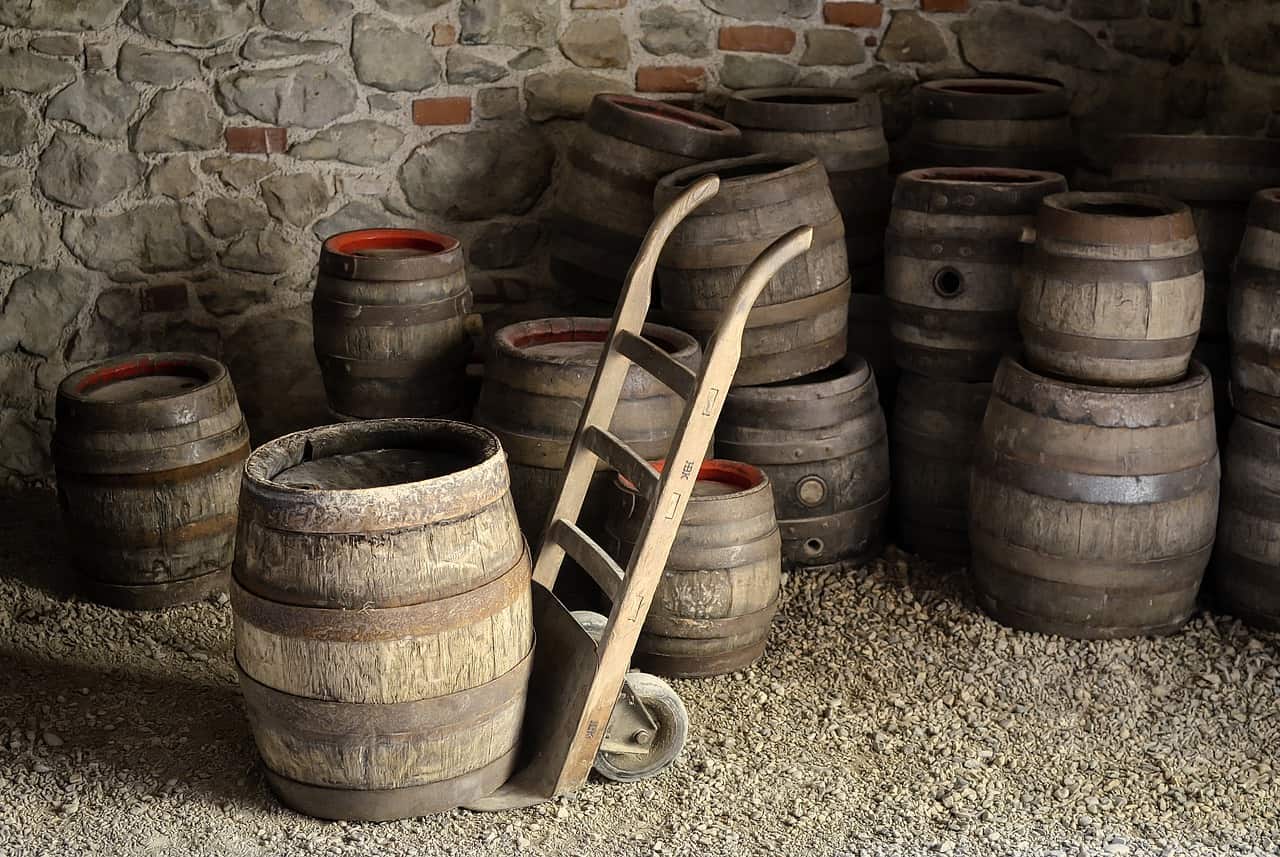
Experimental Barrel Aging: Pushing the Boundaries
Alternative Wood Types
In recent years, whiskey distillers have been pushing the boundaries of traditional barrel aging by experimenting with alternative wood types. These non-traditional barrels, such as those made from cherry, maple, or chestnut, offer a unique flavor profile and expand the possibilities for whiskey production. Each wood type brings its distinct characteristics to the spirit, infusing it with flavors that may range from fruity to spicy or even nutty. The exploration of alternative wood types in barrel aging allows for innovation and creativity in whiskey making, creating a diverse range of flavor options for whiskey enthusiasts.
Finishing in Non-Traditional Barrels
Another experimental technique in barrel aging is finishing the whiskey in non-traditional barrels. After initially aging the spirit in traditional oak barrels, distilleries transfer the whiskey to barrels that previously held different types of spirits or wines. This finishing period allows the whiskey to undergo a second maturation phase, absorbing additional flavors and nuances from the barrel's history. Finishing in non-traditional barrels can enhance the complexity of the whiskey, adding layers of flavor that would not have been achieved through traditional aging methods.
Blending Various Barrel Influences
Whiskey distillers often utilize the art of blending to create unique flavor profiles and ensure consistency in their expressions. By combining whiskey aged in different types of barrels, distilleries can balance and harmonize various flavor influences. Blending allows for the incorporation of multiple barrel profiles, such as American oak, sherry cask, or wine barrel-aged whiskey, resulting in a more complex and well-rounded spirit. The skillful blending of various barrel influences is a testament to the craftsmanship and expertise of master blenders.
Regional Characteristics
Scotch Whisky: Tradition and Specificity
Scotch whisky is renowned for its rich tradition and distinctive regional characteristics. Each region in Scotland has its unique terroir and whiskey-making tradition, contributing to the flavor profile of the spirit. For example, whiskies from the Islay region are known for their peaty and smoky flavors, derived from the local peat used to dry malted barley. Speyside whiskies, on the other hand, are often characterized by fruity and floral notes, reflecting the local water source and distillation techniques. The regional characteristics of Scotch whisky are a testament to the influence of the local environment and traditional production methods.
Bourbon: The American Spirit
Bourbon, often referred to as the "American spirit," has its distinct flavor profile and production regulations. To be recognized as bourbon, the whiskey must be produced in the United States and aged in new charred oak barrels. The aging process in these barrels imparts flavors of caramel, vanilla, and oak spice, creating the characteristic sweetness and richness associated with bourbon. The corn-based mash bill used in bourbon production adds a unique sweetness and grain character, making it a beloved choice among whiskey enthusiasts both in the United States and around the world.
Irish Whiskey: Triple Distillation and Smoothness
Irish whiskey stands out for its triple distillation process, which sets it apart from other whiskey styles. Triple distillation contributes to the smoothness and lightness of Irish whiskey, making it exceptionally approachable. The flavor profile of Irish whiskey often features subtle fruit notes, such as apple or pear, along with hints of vanilla and honey. The use of a variety of barrel types, including American oak, sherry casks, and even wine barrels, adds complexity and layers to the whiskey, contributing to its overall character and flavor.
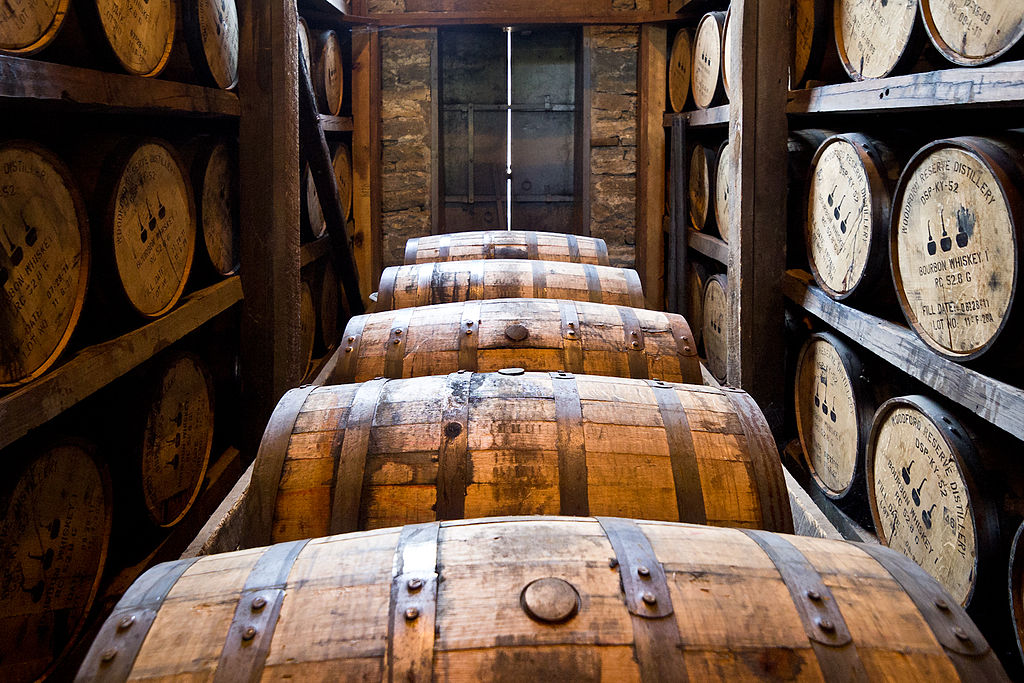
Sourcing and Cooperage: The Craft Behind the Barrels
Oak Sourcing and Aging Potential
The process of barrel-making, known as cooperage, is an art form that requires expertise and precision. Distilleries carefully select the oak used for barrel production, sourcing it from specific regions known for their desirable wood properties. The origin of the oak and the species used play a significant role in the flavor profile of the whiskey. Additionally, the aging potential of the oak is considered when selecting the wood, as certain types of oak age more gracefully and impart desirable flavors over time. The sourcing of oak and understanding its aging potential are crucial steps in the craft of whiskey barrel production.
Cooperage Techniques and Artistry
Cooperage involves a series of intricate techniques and processes, all aimed at crafting the perfect barrel for whiskey aging. The cooper, or barrel maker, carefully selects and shapes the staves, ensuring a tight fit and structural integrity. The staves are then expertly bent and assembled, using traditional methods and tools. The cooper's craftsmanship is on display as they skillfully shape the barrel, paying attention to every detail. The artistry of cooperage is vital in creating barrels that will impart the desired flavors and characteristics to the whiskey, adding depth and complexity to the spirit.
The Role of the Master Cooper
At the heart of the cooperage process is the master cooper, a highly skilled craftsman who possesses a deep understanding of wood and its interaction with whiskey. The master cooper oversees every step of barrel production, from sourcing the oak to shaping and finishing the barrels. Their experience and expertise guide the selection of wood, the process of toasting or charring, and the final assembly of the barrel. The master cooper's attention to detail and commitment to quality ensure the barrels used in whiskey aging meet the highest standards, allowing the spirit to develop its full potential.
Conclusion
The choice of barrel is a critical factor in whiskey making, influencing the flavor, character, and overall quality of the spirit. From traditional oak barrels to sherry casks, wine barrels, and even alternative wood types, each barrel brings its unique attributes and contributes to the whiskey's complexity. The maturation process, secondary influences, and regional characteristics further shape the flavor profile, offering a diverse range of options for whiskey enthusiasts. Behind the scenes, the craft of sourcing and cooperage ensures that each barrel used in whiskey aging meets the highest standards, adding an element of artistry to the process. With so many factors at play, the influence of barrel selection on the flavor of whiskey is undeniable, making it a crucial step in the creation of this beloved spirit. So, the next time you pour yourself a glass of your favorite whiskey, take a moment to appreciate the impact that the barrel has had on the liquid in your glass. Cheers to the remarkable interplay between wood and spirit!
